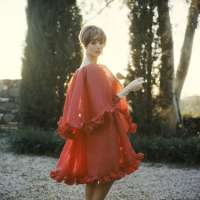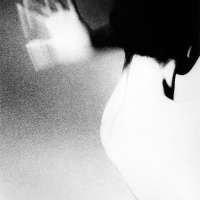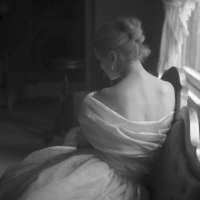

Sally Mann
Katie and the Broken Windshield (At Twelve), 1983-1985
Edition of 25
Sally Mann
Sally Mann Biography Born in Lexington, Virginia, Sally Mann began to study photography in the late 1960s, attending the Ansel Adams Gallery’s Yosemite Workshops in Yosemite National Park, California, and the Putney School and Bennington College, both in Vermont. She received a BA from Hollins College, Roanoke, Virginia, in 1974 and an MA in creative writing the following year. At a moment when many other photographers were creating large-scale color prints, Mann looked to photography’s past, investigating the visual and metaphorical potential of employing nineteenth-century technologies. She has long used an 8 x 10 bellows camera and has explored platinum, bromoil, and wet-plate collodion processes for making prints. Sally Mann had her first solo museum exhibition at the Corcoran Gallery of Art, Washington, DC, in 1977, presenting The Lewis Law Portfolio (1974–76), a series of black-and-white photographs that comprise some of her earliest explorations into the inherent abstract beauty of the everyday. In the early 1980s she published two books, Second Sight and At Twelve, the latter a study of young girls on the cusp of womanhood. Between 1984 and 1994, Mann worked on the series Family Pictures, which focused on her three children, all under the age of twelve. These works touch on ordinary moments—playing, sleeping, and eating—as well as exploring more prominent themes such as death and cultural perceptions of childhood and motherhood. From the late 1990s into the 2000s, Sally Mann honed in on her relationship with the American South, taking photographs in Alabama, Mississippi, and Louisiana for her Deep South series (2005), as well as Civil War Battlefields for Last Measure (2000). Her longtime interest in themes of death, time, and decay are evident in What Remains (Bullfinch Press, 2003), a five-part study of mortality ranging from pictures of the decomposing body of her beloved greyhound to photographs of the site where an armed fugitive committed suicide on her property. In 2003, Mann began documenting the effects of muscular dystrophy on her husband, Larry. These candid and frank portraits, which would later become the Proud Flesh series (2009), recall classical sculpture while capturing a male subject in moments of intimate vulnerability. During those years, Mann repeatedly visited Cy Twombly’s warmly lit studio in Lexington, recording the moments she spent with him there as well as the traces of his artistic life, resulting in the series Remembered Light, published by Abrams in 2016. Sally Mann’s large-scale exhibition, A Thousand Crossings, further explored the complex cultural identity of the American South, Mann’s place of origin—a region rich in literary and artistic traditions but troubled by its often painful history. She began working on the exhibition in 2006, debuted at the National Gallery of Art, Washington, DC, in 2018, and traveled extensively in the United States and abroad. A Guggenheim fellow and a three-time recipient of the National Endowment for the Arts fellowship, Sally Mann was named “America’s Best Photographer” by Time magazine in 2001. In 2021, Mann received the Prix Pictet and was inducted into the International Photography Hall of Fame. She has been the subject of two documentaries: Blood Ties (1994), which was nominated for an Academy Award, and What Remains (2006), which premiered at Sundance and was nominated for an Emmy for Best Documentary in 2008. Sally Mann’s Hold Still: A Memoir with Photographs (Little, Brown, 2015) received universal critical acclaim; it was named a finalist for the 2015 National Book Awards and, in 2016, won the Andrew Carnegie Medal for Excellence in Nonfiction.
3122 East Shadowlawn Ave NE, Atlanta, GA 30305
Tuesday - Saturday, 10am - 5pm
Sunday - Monday, Closed
Jackson Fine Art is an internationally known photography gallery based in Atlanta, specializing in 20th century & contemporary photography.






